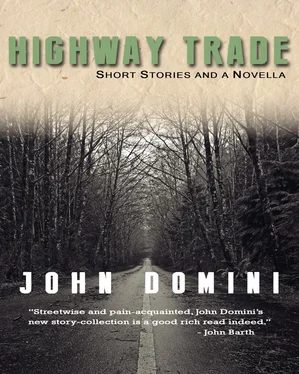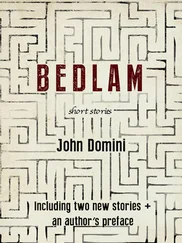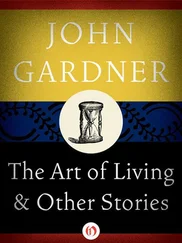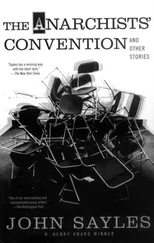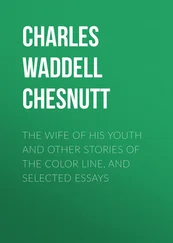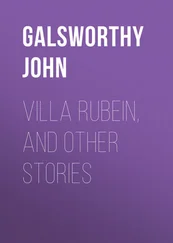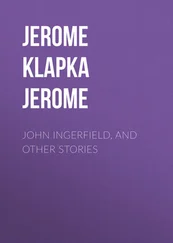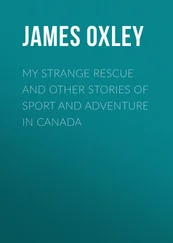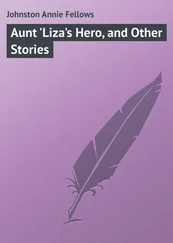John Domini - Highway Trade and Other Stories
Здесь есть возможность читать онлайн «John Domini - Highway Trade and Other Stories» весь текст электронной книги совершенно бесплатно (целиком полную версию без сокращений). В некоторых случаях можно слушать аудио, скачать через торрент в формате fb2 и присутствует краткое содержание. Год выпуска: 2013, Издательство: Dzanc Books, Жанр: Современная проза, на английском языке. Описание произведения, (предисловие) а так же отзывы посетителей доступны на портале библиотеки ЛибКат.
- Название:Highway Trade and Other Stories
- Автор:
- Издательство:Dzanc Books
- Жанр:
- Год:2013
- ISBN:нет данных
- Рейтинг книги:4 / 5. Голосов: 1
-
Избранное:Добавить в избранное
- Отзывы:
-
Ваша оценка:
- 80
- 1
- 2
- 3
- 4
- 5
Highway Trade and Other Stories: краткое содержание, описание и аннотация
Предлагаем к чтению аннотацию, описание, краткое содержание или предисловие (зависит от того, что написал сам автор книги «Highway Trade and Other Stories»). Если вы не нашли необходимую информацию о книге — напишите в комментариях, мы постараемся отыскать её.
Highway Trade and Other Stories — читать онлайн бесплатно полную книгу (весь текст) целиком
Ниже представлен текст книги, разбитый по страницам. Система сохранения места последней прочитанной страницы, позволяет с удобством читать онлайн бесплатно книгу «Highway Trade and Other Stories», без необходимости каждый раз заново искать на чём Вы остановились. Поставьте закладку, и сможете в любой момент перейти на страницу, на которой закончили чтение.
Интервал:
Закладка:
“I held her hand. I felt her go.”
“Mary?” This might have been Teri. “Mary, maybe this is all a little too soon for you…”
Mary stamped her foot, a huge noise in that space. “I felt it, like that. Gone! Nobody understands, nobody.”
“And,” Lavender said, “you were jealous?”
“I was jealous!”
“But that just shows you’re evolved. You’re right on the verge, so close to some greater—“
“Close? I was close when I was in the terminal ward.”
Lavender fitted the sleeve-ends of her sweatshirt together, hiding her hands.
“The millennium,” Mary said. “We need a new spirit, a new connection to the spirit, for the new millennium.”
“The millennium? The end of the world?”
“The end of our miserable empty lives. When Mama went, I had nothing left!”
“Oh.”
Mary had no idea who spoke. She had her head down, suddenly, and when she again stamped her foot it wasn’t nearly so loud. Massaging her forehead, her dry old forehead, she felt murky contradictions behind the bone. It felt almost as if all her kicking and screaming had been about opening up to the others, about asking their help. Coming away from the window had put her in the center of the circle. But still she didn’t care for how Teri and Inksa sat poised behind her, like two pincers ready to close in. She didn’t care for the room’s silence, alert, breathless. The clogs and Birkenstocks before her, along the front of the sofa, were up on the balls of their feet.
“Oh, Mary.”
She couldn’t tell who spoke, but she heard the sympathy. The good vibrations. At the first touch — someone creaking forward on the sofa — she bolted for the door. She ran for the sea air, the cliff steps.
Where was she going? Why didn’t she head to her bedroom to pack? The anger didn’t allow her an answer, the anger or the pain (was there a difference, really?). If she heard a shout as she crossed the scrap of lawn under Inksa’s window, she couldn’t think about it. She couldn’t say why she slowed down so soon, either; she slowed to a stagger just minutes after coming out on the beach.
She stopped, leg-sore already on the soft sand. She kept yawning, tasting rare oceanside heat. Inksa’s window must have been treated, photo-sensitive. Out here the sun seemed stuck in place, some organ too fat and slow for its gauze-like blue body.
In a nook between fingers of cliff, protected from what little breeze there was, she found a hump carpeted with soft grass. It wasn’t sea grass; it didn’t crackle. And she was through with running.
At last a place she knows: a church. She knows the church and she knows the country: the mild, homey sun that catches the designs on the cathedral floor, the ancient Imperial tile recycled to make those designs — mosaic circles and whorls, such designs — and she knows the worshippers too. Everyone’s dipping down on one knee, down into a three-point genuflection, and she herself dips down, with knee and toe and knuckle to the mosaic floor before the Resurrection. She knows well that dip and touch, as natural as surf, and yet personal, intensely personal. Mary knows the whole stony arena so well that at first even the film director carrying on behind her doesn’t disturb the stodgy warmth with which she waits, almost asleep in her pew, for the Host to come around.
But he’s impossible to ignore, the director. He’s nothing like a man at mass, shuttling people around with the full vocabulary of gestures this country is famous for, with meaty thoughtful pouts and eloquent shrugs. The director does so much of this — too much, really, for someone in such a good silk suit — that Mary’s eyes open again and stay that way. She understands that the national instinct for gestures is bound up in the rituals of the church: in that brief stagger as a worshipper enters the sanctuary. She understands, as she watches the director taking bearings through a lens that dangles around his neck (at first glance you might mistake it for an icon), that the cathedral is missing its fourth wall. The tile underfoot is plastic. The sun in the stained glass is halogen.
How long has she been in a movie? When , she demands, did I ever say I’d play the hero?
The director is nothing but compassion, kneeling beside her with a lippy expressive face almost a mother’s, a sister’s. He speaks apologetically, though with something in his tone that makes clear he’s explained this all before. He must have her face, he says. He simply must have her face.
What’s this , she asks, a fairy tale? The old magic?
Looks like it: now through the cathedral ceiling — no, through boom mikes and track lighting — descends the oldest magic of all, the Great Mother herself. The Great Mother in her famed watchful pose, down on one knee so that she may spy on the latest indiscretion of the Great Father: on his latest “epiphany” before her pretty young votives. Slung on a rig beneath an ear-shattering helicopter, the Mother drops hugely into place before the Resurrection. And she’s not marble, not white, but honest brown.
Hides-the-dirt brown — hashish brown, cuckoo-clock brown — all these and other browns spin through Mary’s head (the color’s basic after all, she reminds herself: as basic as dirt) because now she’s spinning literally, or her face is at least; the director has taken her face and flung it towards the low-hanging head of the goddess. In the wash of the rotors Mary spins, she crosses vast distances — crosses oceans and continents, tossing and turning — but there’s no denying gravity. She ends up the face of the Mother. It’s what’s best for the movie.
Then too, the set’s ungainly mannequin doesn’t feel so bad, against the inner lining of her eyes and mouth and ears. It’s a snug fit, natural as dirt, and it’s not nearly as scary as Mary had thought it would be to hang exposed up here — exposed just as she is, alone and no longer pretty, in the vibration and echo of the domed machine over her head. Behind Mary’s face, now, the jerry-rigged deity speaks. Hello, it says. I’ve got a riddle.
What, it asks, walks on four legs in the morning, two legs at noon, and three legs at night?
Mary chuckles supportively. She’s heard this one before. And they do more of this, riddle and answer, she and the blind, unfinished creature within.
Yes, she’s at ease at last, Mary, settling into the role. But she needs to ask the director one final question. Is this all it takes? she needs to ask. Another dream? The man is hard to find, however, in the confusing, wide-open church. She sees only extras, a thickening circle, uncertain but eager foreign folk struggling for something that will come across as grace, faith, communion.
Period Sets
STANLEY WAS OFF draping towels over all the mirrors in the house. Nonie waited by the coffee. She studied the strip of newsprint between the steaming mugs, an inch-long cutting, curled at the ends like a tiny boat. Stanley’s doubts were so obvious — this last-minute delaying tactic with the mirrors — that Nonie made a point of keeping her own face formal, unafraid. Studying the newsprint. The stain on the paper at least was interesting, a mazy rainbow stipple. It was a shrunken slice of the Grand Canyon wall, a flat patch of cartoon coyote once the Roadrunner was through with him.
When Stanley returned Nonie allowed herself a short smile, watching him work. He used his X-acto blade to halve the paper, splitting the stain precisely in half. He used tweezers to lift each half into their cups. Careful as a spider. He buttoned both the blade and the tweezers back into his kit before he touched his coffee. At such times Stanley reminded her of her father, switching off between a twenty-pound maul and a bottle of Rainier. If only the man could always be at this busy distance, handling his tools. Then there’d never be any question about loving him.
Читать дальшеИнтервал:
Закладка:
Похожие книги на «Highway Trade and Other Stories»
Представляем Вашему вниманию похожие книги на «Highway Trade and Other Stories» списком для выбора. Мы отобрали схожую по названию и смыслу литературу в надежде предоставить читателям больше вариантов отыскать новые, интересные, ещё непрочитанные произведения.
Обсуждение, отзывы о книге «Highway Trade and Other Stories» и просто собственные мнения читателей. Оставьте ваши комментарии, напишите, что Вы думаете о произведении, его смысле или главных героях. Укажите что конкретно понравилось, а что нет, и почему Вы так считаете.
